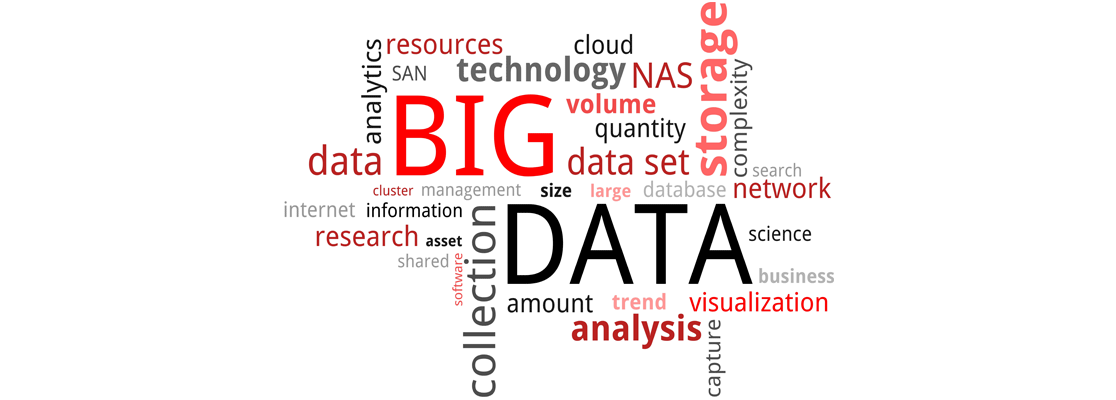Introduction
Today, we live in a technology-driven world that forces us to spend most of our time using many types of digital devices. Though it might be alarming for some to know that the digital footprints we leave behind each and every second could be tracked for various purposes (good and bad), it is exciting for us as learning professionals to think of the possibilities of putting these digital breadcrumbs to better use in the learning and development landscape.
This is possible using Big Data – the latest buzzword in data mining and data analytics technologies.
But, what is Big Data?
Big Data refers to the large amounts of unstructured data flowing through numerous sources in our digital world every second. In the e-learning scenario, Big Data is the data produced by learners interacting with the learning content. This data is collected through Learning Management Systems (LMS), Content Management Systems (CMS) and other media, including social networks via which the learners interact with our learning programs.
Due to the rapid advancements in computer processing power, Big Data can now be processed and analysed, providing us with new insights into how people learn!
Benefits of Big Data
Big Data is currently used by organizations for various purposes, primarily for more productive business results. In the e-learning domain too, there are many interesting experiments being carried out around the world, in order to understand the enormous potential of Big Data.
For example, with the help of Big Data, you can watch your learners (virtually, of course!) and track:
• The areas of the program they find hard and spend more time on
• The pages they revisit often
• The areas in which they get stuck
• The sections they recommend to their peers
• The learning styles they prefer
• The time of the day they learn better
In short, Big Data can help us understand the real behavior patterns of our learners more effectively than traditional beliefs and theories on learner behavior. These patterns could lead us to highly valuable information on what and how they learn; thereby helping us make well-informed decisions about the learning programs and even identify design flaws.
However, the real strength of Big Data lies in its power to help forecast or predict scenarios and take preventive action. For example, with the help of Big Data, you could predict:
• How strong your learners are in every concept of the course that they haven’t even taken yet!
• Where your learners are likely to struggle or fail
Big Data could help us predict learners’ performance and outcomes before they start a training program. This could even be at the early stages of analyzing the training requirements! It could allow us to forecast trends and draw conclusions about our learning and development initiatives.
How is Big Data going to revolutionize e-Learning?
Big Data is set to revolutionize the way e-learning is designed, developed and delivered. Bringing this technological innovation into e-learning has opened the door to immense possibilities of making learning more effective. It could help us design and deliver more personalized and adaptive learning programs for our learners.
These are possibilities that we never even imagined or visualized earlier. Big Data has the potential to change our approach to learning and development by challenging the most important beliefs and principles of learning design. It promises to help us push the limits of what we can achieve using present tracking standards. This new technological solution may even force us to refine our traditional approaches to learning design including the processes, systems and procedures that we are presently following.
Here are a few early examples of companies who are using Big Data to change the world of education and learning:
• Knewton Technology from Knewton (http://www.knewton.com/) is helping learning companies and institutions around the world to improve student achievement.
• Civitas Learning’s (http://www.civitaslearning.com) Civitas Learning Platform is helping schools, colleges and universities improve success rates for both students and institutions.
Conclusion
While there are concerns about the possible misuse of Big Data in the context of learning and education, it looks like these are massively outweighed by the benefits. Big Data seems set to not just stay, but evolve, thereby helping us (learning designers) make learning truly effective for our learners and also ensuring a healthy Return-on-Investment (ROI) for our partners and customers. Companies who embrace Big Data and use it to drive their business decisions will, in all probability, succeed in maintaining a high competitive advantage over others.
Here is a good Infographic on Big Data:
http://visual.ly/big-data-infographic-1
If you want to learn more about ‘Big Data in Education’, here is a course from Coursera:
https://www.coursera.org/course/bigdata-edu
What is your experience on using Big Data in your organization? How has it impacted the way you do business? What are some interesting ways that you think Big Data can be utilized in learning design? Let us know…
Written by Santhosh Kumar
_________________________________
Published on 09-Aug-2013






